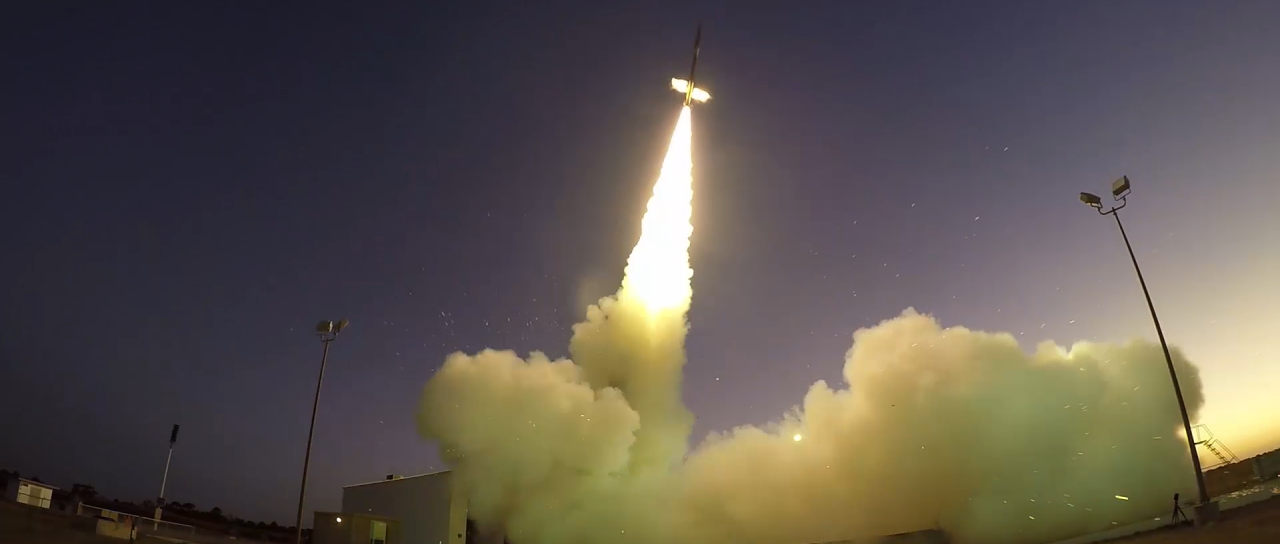
A 58-foot-tall Black Brant IX sounding rocket launches from NASA’s Wallops Flight Facility on Oct. 4. This was the first test of the Mars 2020 mission’s parachute-testing series, the Advanced Supersonic Parachute Inflation Research Experiment, or ASPIRE. Photo & Caption Credit: NASA/Wallops
On October 4, 2017, NASA completed the first supersonic parachute test in preparation for the space agency’s Mars 2020 rover mission. A 58-foot (17.7-meter) Black Brandt IX sounding rocket launched the Advanced Supersonic Parachute Inflation Research Experiment (ASPIRE) payload from NASA’s Wallops Island Flight Facility in Virginia. The test provided dramatic video of the parachute opening at supersonic speed.
“It is quite a ride,” said Ian Clark, the test’s technical lead from NASA’s Jet Propulsion Laboratory (JPL) in Pasadena, California. “The imagery of our first parachute inflation is almost as breathtaking to behold as it is scientifically significant. For the first time, we get to see what it would look like to be in a spacecraft hurtling towards the Red Planet, unfurling its parachute.”
The ASPIRE payload is a bullet-nosed, cylindrical structure carrying a supersonic parachute, the parachute deployment mechanism, and the test’s high-definition cameras and other data-recording instruments.
The rocket carried the payload to an altitude of 32 miles (51 kilometers) about two minutes into the flight. Forty-two seconds later, the test conditions were met, and the parachute deployed successfully at an altitude of 26 miles (42 kilometers) and velocity of 1.8 times the speed of sound. ASPIRE splashed down in the Atlantic Ocean 35 minutes later, about 34 miles (54 kilometers) southeast of Wallops Island. The payload was subsequently recovered and returned to Wallops for data retrieval and inspection.
“Everything went according to plan or better than planned,” said Clark. “We not only proved that we could get our payload to the correct altitude and velocity conditions to best mimic a parachute deployment in the Martian atmosphere, but as an added bonus, we got to see our parachute in action as well.”
The first ASPIRE flight tested a parachute that was nearly identical to the one used to successfully land NASA’s Mars Science Laboratory on the Martian surface in 2012. Subsequent tests will evaluate a strengthened parachute that may also be used on future Mars missions. The second ASPIRE test is scheduled to occur between February 12–20, 2018.
NASA’s Mars 2020 rover will search for signs of ancient life on Mars and cache drilled rock samples for potential future return to Earth. The mission is scheduled to launch in July/August of 2020 and land on Mars in February 2021.
Hi! I am a robot. I just upvoted you! I found similar content that readers might be interested in:
http://www.spaceflightinsider.com/organizations/nasa/nasa-performs-first-test-mars-2020-rover-supersonic-parachute/
Downvoting a post can decrease pending rewards and make it less visible. Common reasons:
Submit